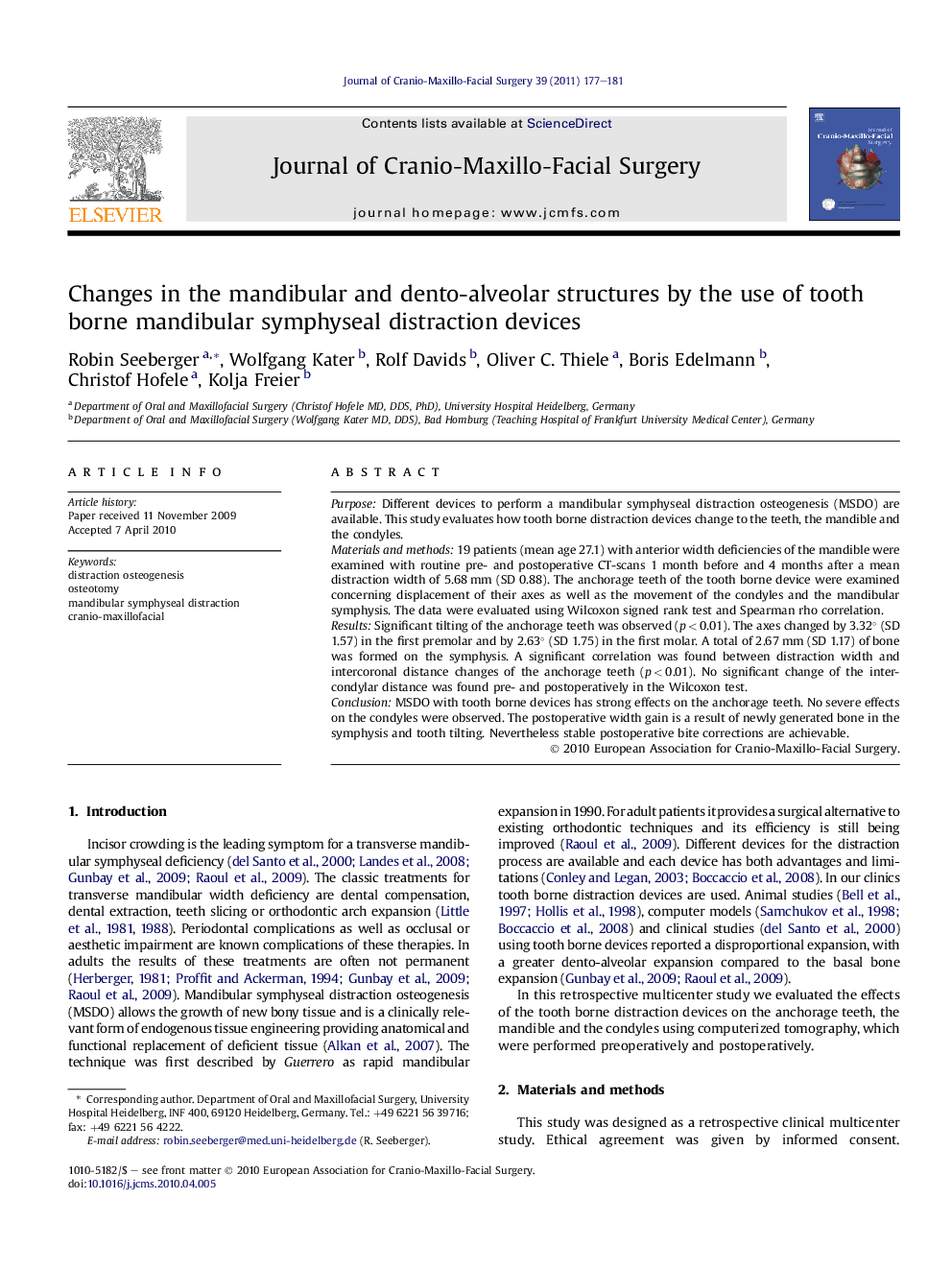| Article ID | Journal | Published Year | Pages | File Type |
|---|---|---|---|---|
| 3143250 | Journal of Cranio-Maxillofacial Surgery | 2011 | 5 Pages |
PurposeDifferent devices to perform a mandibular symphyseal distraction osteogenesis (MSDO) are available. This study evaluates how tooth borne distraction devices change to the teeth, the mandible and the condyles.Materials and methods19 patients (mean age 27.1) with anterior width deficiencies of the mandible were examined with routine pre- and postoperative CT-scans 1 month before and 4 months after a mean distraction width of 5.68 mm (SD 0.88). The anchorage teeth of the tooth borne device were examined concerning displacement of their axes as well as the movement of the condyles and the mandibular symphysis. The data were evaluated using Wilcoxon signed rank test and Spearman rho correlation.ResultsSignificant tilting of the anchorage teeth was observed (p < 0.01). The axes changed by 3.32° (SD 1.57) in the first premolar and by 2.63° (SD 1.75) in the first molar. A total of 2.67 mm (SD 1.17) of bone was formed on the symphysis. A significant correlation was found between distraction width and intercoronal distance changes of the anchorage teeth (p < 0.01). No significant change of the intercondylar distance was found pre- and postoperatively in the Wilcoxon test.ConclusionMSDO with tooth borne devices has strong effects on the anchorage teeth. No severe effects on the condyles were observed. The postoperative width gain is a result of newly generated bone in the symphysis and tooth tilting. Nevertheless stable postoperative bite corrections are achievable.
